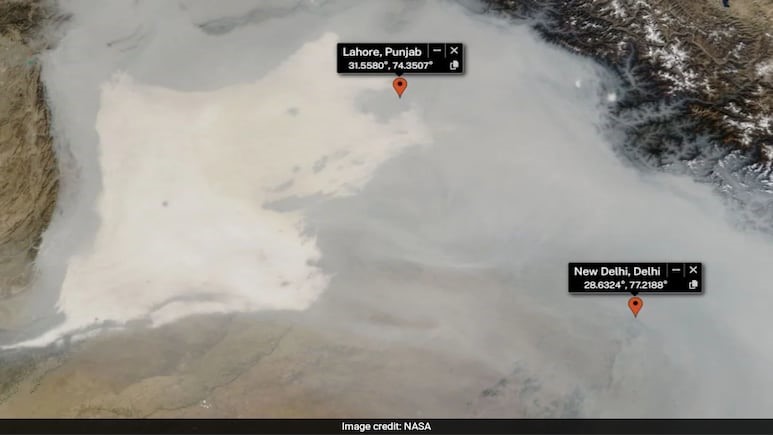
The extent of pollution in northern India can be gauged from a picture released by NASA. The special thing is that India is not the only country facing this problem, but the situation is even more serious in neighbouring country Pakistan.
In this picture of NASA, a thick sheet of smoke and haze can be seen from Delhi to Lahore. Both the cities have been marked through pins in the picture. It is worth noting that the air in India's capital Delhi is very bad and air pollution remains in the severe category continuously.

Slight improvement in Delhi's AQI
On Sunday, Delhi's AQI improved a bit and came below 350 after seven days. Despite this, the air quality remained in the 'very poor' category for the 12th consecutive day. According to the Central Pollution Control Board (CPCB), Delhi's AQI was recorded at 334 on Sunday. This level of air is placed in the 'very poor' category.
On the other hand, air pollution touched record levels this month in Lahore, located in Pakistan's Punjab province near the Indian border. Lahore has a population of about 14 million people and there are many factories here, which makes it one of the most polluted cities in the world. In the ranking released last week by the Swiss group IQAir, Lahore's AQI was reported to be 1165.
AQI crosses 2000 in Multan
It is worth noting that an Air Quality Index (AQI) of 50 or less is considered good with low risk of pollution. Orders have also been issued to close schools in Pakistan due to dangerous levels of pollution. According to news agency AFP, in Multan, another city with a population of millions, located about 350 kilometers away, the AQI level crossed 2,000 last week.
As a precaution, entry to parks, zoos, playgrounds, historical monuments, museums and recreational areas has also been banned. Also, tuk-tuks with polluting two-stroke engines and restaurants running barbecues without filters have also been banned. A smog war room has been set up in Pakistan's Punjab province, where staff from eight departments work towards controlling the burning of farm waste and managing traffic.
--Advertisement--

 Share
Share



